Ultra-Precision Cutting Mechanism of KDP Crystal in Microplastic Region via Heating Assistance
Abstract
:1. Introduction
2. Theory of Ductile/Brittle Transition
3. Experimental Section
3.1. Materials
3.2. Experimental Procedures
3.2.1. Nanoscratch Experiment with Heating Assistance
3.2.2. Cutting Experiment with Heating Assistance
4. Results
4.1. Heating-Assisted Nanoscratches
4.2. Results of Diamond Fly Cutting Experiment
5. Discussion
5.1. Effect of Heating on Cutting Performance of KDP Crystals
5.2. Impact of Heating-Assistance on the Surface Quality of KDP Crystals
6. Conclusions
- A processing method was developed to improve the surface quality of KDP crystals on the basis of the theory of ductile/brittle transition, wherein the surface temperature of KDP crystals is increased to enlarge the plastic zone. Several nanoindentation experiments were conducted on KDP crystals, and the critical depth of the ductile/brittle transition of KDP crystals was about 38 nm.
- Nanoscratch experiments were performed on KDP crystal surfaces under heat. With the increase in the scratch length, the surface scratch changed from the plastic to the brittle zone, and the surface removal mode transformed from plastic slip to brittle fracture. The ductile/brittle transition depth of KDP crystals increased with increasing temperature. The surface morphology was affected by temperature, verifying the effectiveness of the heating-assisted method in improving the cutting performance of KDP crystal.
- Finally, with heating, KDP crystal surfaces were processed using a UPDFC machine. The results showed that the surface roughness value of the material reached 5.275 nm as the surface temperature increased to 50 °C, indicating the superior surface quality compared with that at room temperature. These results verified the effectiveness of the heating-assisted machining method in improving the surface quality. As a typically brittle material, the processing of KDP crystals is a challenge. We proposed a heating-assisted method to improve surface quality, which provides a useful reference for the processing of other soft and brittle materials.
Author Contributions
Funding
Data Availability Statement
Acknowledgments
Conflicts of Interest
References
- Su, G.; Zeng, J.; He, Y.; Li, Z.; Huang, B.; Jang, R. Application of large section KDP crystals in the study of laser fusion. J. Chin. Ceram. Soc. 1997, 25, 717–719. [Google Scholar]
- Deng, L.; Yang, H.; Zeng, X.; Wu, B.; Liu, P.; Wang, X.; Duan, J. Study on mechanics and key technologies of laser nondestructive mirror-separation for KDP crystal. Int. J. Mach. Tools Manuf. 2015, 94, 26–36. [Google Scholar] [CrossRef]
- Liu, P.; Deng, L.; Duan, J.; Wu, B.; Zeng, X.; Shangguan, Y.; Wang, X. A study on laser multi-focus separation technology of thick KDP crystal. Int. J. Mach. Tools Manuf. 2017, 118, 26–36. [Google Scholar] [CrossRef]
- Zhang, X.; Sun, F. A two-parameter model for predicting thermal contact resistance between crystal and aluminum alloy based on turning morphology. Proc. Inst. Mech. Eng. Part B J. Eng. Manuf. 2022, 236, 146–159. [Google Scholar] [CrossRef]
- Pang, Q.; Kuang, L.; Xu, Y.; Dai, X. Study on the extraction and reconstruction of arbitrary frequency topography from precision machined surfaces. Proc. Inst. Mech. Eng. Part B J. Eng. Manuf. 2019, 233, 1772–1780. [Google Scholar] [CrossRef]
- Xie, Y.-M.; Li, X.-Z.; Zheng, B.; Yang, L.-L. Progress in the Research of KDP(KH2PO4) Crystals. Hebei J. Ind. Sci. Technol. 2006, 2006, 377–380. [Google Scholar]
- Pritula, I.M.; Salo, V.I.; Kolybayeva, M.I. Optical and structural characteristics of oriented rapidly grown KDP single crystals. In Proceedings of the Operational Characteristics and Crystal Growth of Nonlinear Optical Materials, Denver, CO, USA, 19–20 July 1999. [Google Scholar]
- Phan, V.T.; Do, T.T.; Ho, T.M.; Nguyen, D.T.; Van Le, B.; Le, A.T.; Van Le, N.; Huynh, D.T. Some structural, linear and nonlinear optical characteristics of single KDP crystals influenced by EDTA additive. Opt. Quantum Electron. 2018, 50, 429. [Google Scholar] [CrossRef]
- Gunasekaran, S.; Ramkumaar, G.R. Analysis on suitability of pure and α-Histidine doped KDP crystals in high speed applications. Indian J. Phys. 2009, 83, 1549–1555. [Google Scholar] [CrossRef]
- Hébert, D.; Hallo, L.; Voisin, L.; Desanlis, T.; Galtié, A.; Bicrel, B.; Maunier, C.; Mercier, P.; Duchateau, G. A KDP equation of state for laser-induced damage applications. J. Appl. Phys. 2011, 109, 123527. [Google Scholar] [CrossRef]
- Xu, X.; Sun, X.; Wang, Z.; Shao, Z.; Wang, S.; Gao, Z. Optical characteristics of H3BO3-doped KDP crystals. Acta Opt. Sin. 2001, 21, 1396–1399. [Google Scholar]
- Sun, X.; Wang, Z.P.; Wang, S.L.; Gu, Q.T.; Xu, X.G.; Li, Y.P.; Fang, C.S. Origin and relation of three kinds of scatter centers in KDP and DKDP crystals. Cryst. Res. Technol. J. Exp. Ind. Crystallogr. 2004, 39, 796–799. [Google Scholar] [CrossRef]
- Pang, Q.; Kuang, L.; Xu, Y. The influence of cutting parameters on micro-topography of frequency features extracted from the machined KH2PO4 surfaces. Proc. Inst. Mech. Eng. Part B J. Eng. Manuf. 2020, 234, 1762–1770. [Google Scholar] [CrossRef]
- Hong, D.; Zeng, W.; Yang, N.; Tang, B.; Liu, Q.-J. The micro-wear mechanism of diamond during diamond tool fly-cutting KDP (KH2PO4) from first principle calculations. J. Mol. Model. 2020, 26, 284. [Google Scholar] [CrossRef] [PubMed]
- Hou, J.; Zhang, J.; Chen, J.; Zhang, X.; Hu, D. Surface quality of large KDP crystal fabricated by single-point diamond turning. In Proceedings of the 2nd International Symposium on Advanced Optical Manufacturing and Testing Technologies: Advanced Optical Manufacturing Technologies 2006, Xi’an, China, 2–5 December 2006. [Google Scholar]
- Lei, X.Y.; Zhang, S.; Wang, S.F.; Zhang, J.F.; Su, W.H.; Zhang, L.P.; An, C.H.; Wang, J.; Zhang, Q.H.; Liu, M.C.; et al. Influence of the arrangement of vacuum chuck holes on the transmittance wavefront of large-aperture KDP in single-point diamond turning. Appl. Opt. 2020, 59, 3619–3623. [Google Scholar] [CrossRef] [PubMed]
- Fuchs, B.A.; Hed, P.P.; Baker, P.C. Fine diamond turning of KDP crystals. Appl. Opt. 1986, 25, 1733–1735. [Google Scholar] [CrossRef]
- Liu, Q.; Chen, M.; Liao, Z.; Feng, J.; Xu, D.; Cheng, J. On the improvement of the ductile removal ability of brittle KDP crystal via temperature effect. Ceram. Int. 2021, 47, 33127–33139. [Google Scholar] [CrossRef]
- Zhang, C.L.; Feng, P.F.; Wu, Z.J.; Yu, D.W. Experimental Investigation on Surface Roughness of KDP Crystal Processed with Rotary Ultrasonic Face Milling. Key Eng. Mater. 2012, 499, 223–228. [Google Scholar] [CrossRef]
- Kozlowski, M.R.; Thomas, I.; Edwards, G.; Stanion, K.; Fuchs, B.; Latanich, L. Influence of diamond turning and surface cleaning processes on the degradation of KDP crystal surfaces. In Proceedings of the Inorganic Crystals for Optics, Electro-Optics, and Frequency Conversion 1991, San Diego, CA, USA, 25 July 1991. [Google Scholar]
- Fu, P.; Xue, J.; Zhou, L.; Wang, Y.; Lan, Z.; Zhan, L.; Zhang, F. Influence of the heat deformation of ultra-precision fly cutting tools on KDP crystal surface microstructure. Int. J. Adv. Manuf. Technol. 2019, 103, 1009–1018. [Google Scholar] [CrossRef]
- Lai, M.; Zhang, X.; Fang, F.; Bi, M. Effects of crystallographic orientation and negative rake angle on the brittle-ductile transition and subsurface deformation in machining of monocrystalline germanium. Precis. Eng. 2019, 56, 164–171. [Google Scholar] [CrossRef]
- Liu, S.-L.; Chen, H.-R.; Yuan, S.-S.; Zhu, Q.-Z. Experimental investigation and micromechanical modeling of the brittle-ductile transition behaviors in low-porosity sandstone. Int. J. Mech. Sci. 2020, 179, 105654. [Google Scholar] [CrossRef]
- Wang, Q.; Chen, R.; Chen, D.; Su, Y.; Ding, H.; Guo, J.; Fu, H. The characteristics and mechanisms of creep brittle-ductile transition in TiAl alloys. Mater. Sci. Eng. A 2019, 767, 138393. [Google Scholar] [CrossRef]
- Zhang, M.; Yang, S.; Wan, F. Competition mechanism of brittle–ductile transition of metals under tensile condition. Mech. Mater. 2019, 137, 103138. [Google Scholar] [CrossRef]
- Zhang, C.; Zhu, H.; Jiang, Z.; Huang, C.; Wang, J. Removal mechanism and surface quality of crystal semiconductor materials in scratching tests with Berkovich indenter. Mater. Sci. Semicond. Process. 2020, 105, 104746. [Google Scholar] [CrossRef]
- Ma, B.; Zhang, W.; Wang, Y.; Song, H.; Xie, X.; Zhang, Z.; Yao, C.; Luo, H.; Niu, R. Fabrication and nanoindentation characterization of MgAlON transparent ceramics. Opt. Mater. 2018, 84, 714–721. [Google Scholar] [CrossRef]
- Lu, J.; Luo, Q.; Xu, X.; Huang, H.; Jiang, F. Removal mechanism of 4 h- and 6 h-sic substrates (0001 and 0001) in mechanical planarization machining. Proc. Inst. Mech. Eng. Part B J. Eng. Manuf. 2019, 233, 69–76. [Google Scholar] [CrossRef]
- Qian, L.; Ming, L.; Zhou, Z.; Hui, Y.; Shi, X. Comparison of nano-indentation hardness to microhardness. Surf. Coat. Technol. 2005, 195, 264–271. [Google Scholar] [CrossRef]
- Zhu, B.; Zhao, D.; Tian, Y.; Wang, S.; Zhao, H.; Zhang, J. Study on the deformation mechanism of spherical diamond indenter and its influence on 3C-SiC sample during nanoindentation process via molecular dynamics simulation. Mater. Sci. Semicond. Process. 2019, 90, 143–150. [Google Scholar] [CrossRef]
- Muszalski, J.; Sankowska, I.; Kucharski, S. Nanoindentation of GaAs/AlAs distributed bragg reflector grown on GaAs substrate. Mater. Sci. Semicond. Process. 2020, 109, 104912. [Google Scholar] [CrossRef]
- Li, M.; Guo, X.; Zhai, R.; Luo, X.; Kang, R.; Jin, Z.; Guo, D. Study on the subsurface damage mechanism of optical quartz glass during single grain scratching. Ceram. Int. 2021, 47, 7683–7691. [Google Scholar] [CrossRef]
- Yang, S.; Zhang, L.; Wu, Z. An investigation on the nano-abrasion wear mechanisms of KDP crystals. Wear 2021, 476, 203692. [Google Scholar] [CrossRef]
- Rao, X.; Zhang, F.; Lu, Y.; Luo, X.; Chen, F. Surface and subsurface damage of reaction-bonded silicon carbide induced by electrical discharge diamond grinding. Int. J. Mach. Tool Manuf. 2020, 154, 103564. [Google Scholar] [CrossRef]
- Bifano, T.G.; Dow, T.A.; Scattergood, R.O. Ductile-regime grinding—A new technology for machining brittle materials. J. Eng. Ind.-Trans. ASME 1991, 113, 184–189. [Google Scholar] [CrossRef]
- Ebisu, T.; Horibe, S. Analysis of the indentation size effect in brittle materials from nanoindentation load–displacement curve. J. Eur. Ceram. Soc. 2010, 30, 2419–2426. [Google Scholar] [CrossRef]
- Goel, S.; Luo, X.; Comley, P.; Reuben, R.L.; Cox, A. Brittle–ductile transition during diamond turning of single crystal silicon carbide. Int. J. Mach. Tools Manuf. 2013, 65, 15–21. [Google Scholar] [CrossRef] [Green Version]
- Mao, W.G.; Shen, Y.G.; Lu, C. Nanoscale elastic–plastic deformation and stress distributions of the C plane of sapphire single crystal during nanoindentation. J. Eur. Ceram. Soc. 2011, 31, 1865–1871. [Google Scholar] [CrossRef] [Green Version]
- Ayomoh, M.K.O.; Abouelhossein, K.A.; Olufayo, O.A. Model for cutting force prediction in high precision single-point diamond turning of optical silicon. Afr. J. Sci. Technol. Innov. Dev. 2017, 9, 111–120. [Google Scholar] [CrossRef]
- Lin, Z.; Wang, S.; Chen, X.; Suet, T.; Yin, Z.; Liu, J. Modeling and prediction of surface topography with three tool-work vibration components in single-point diamond turning. Int. J. Adv. Manuf. Technol. 2018, 98, 1627–1639. [Google Scholar]
- Ge, M.; Zhu, H.; Huang, C.; Liu, A.; Bi, W. Investigation on critical crack-free cutting depth for single crystal silicon slicing with fixed abrasive wire saw based on the scratching machining experiments. Mater. Sci. Semicond. Process. 2018, 74, 261–266. [Google Scholar] [CrossRef]
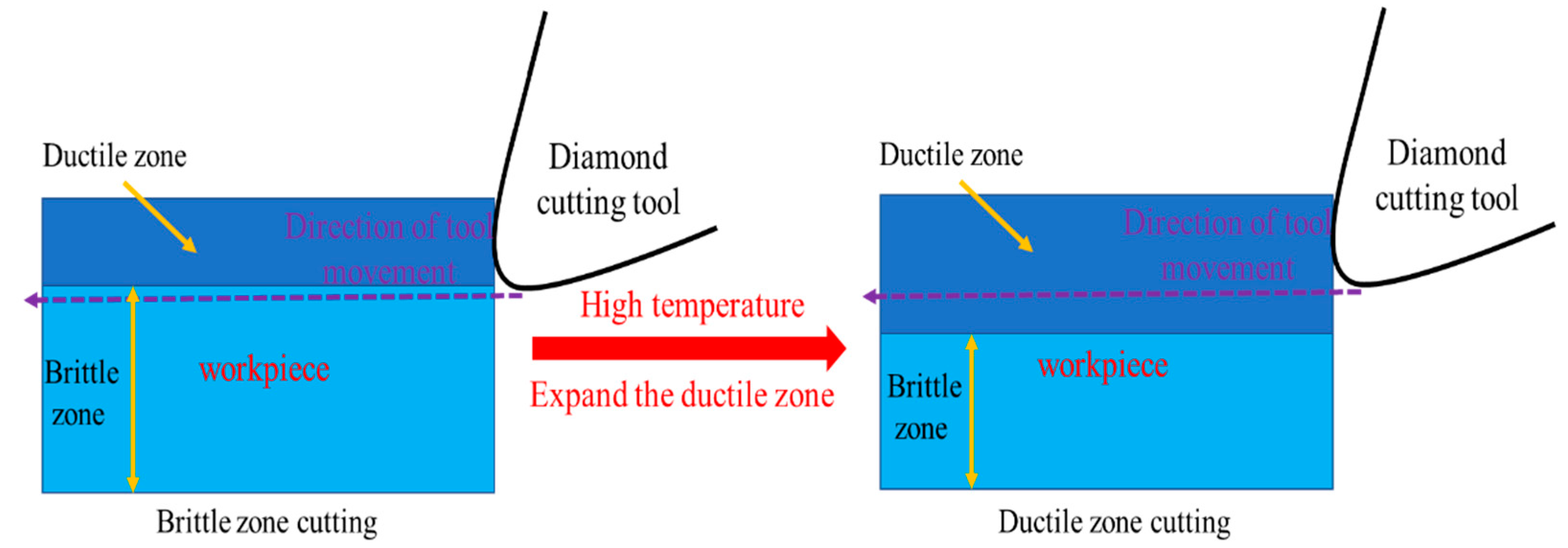
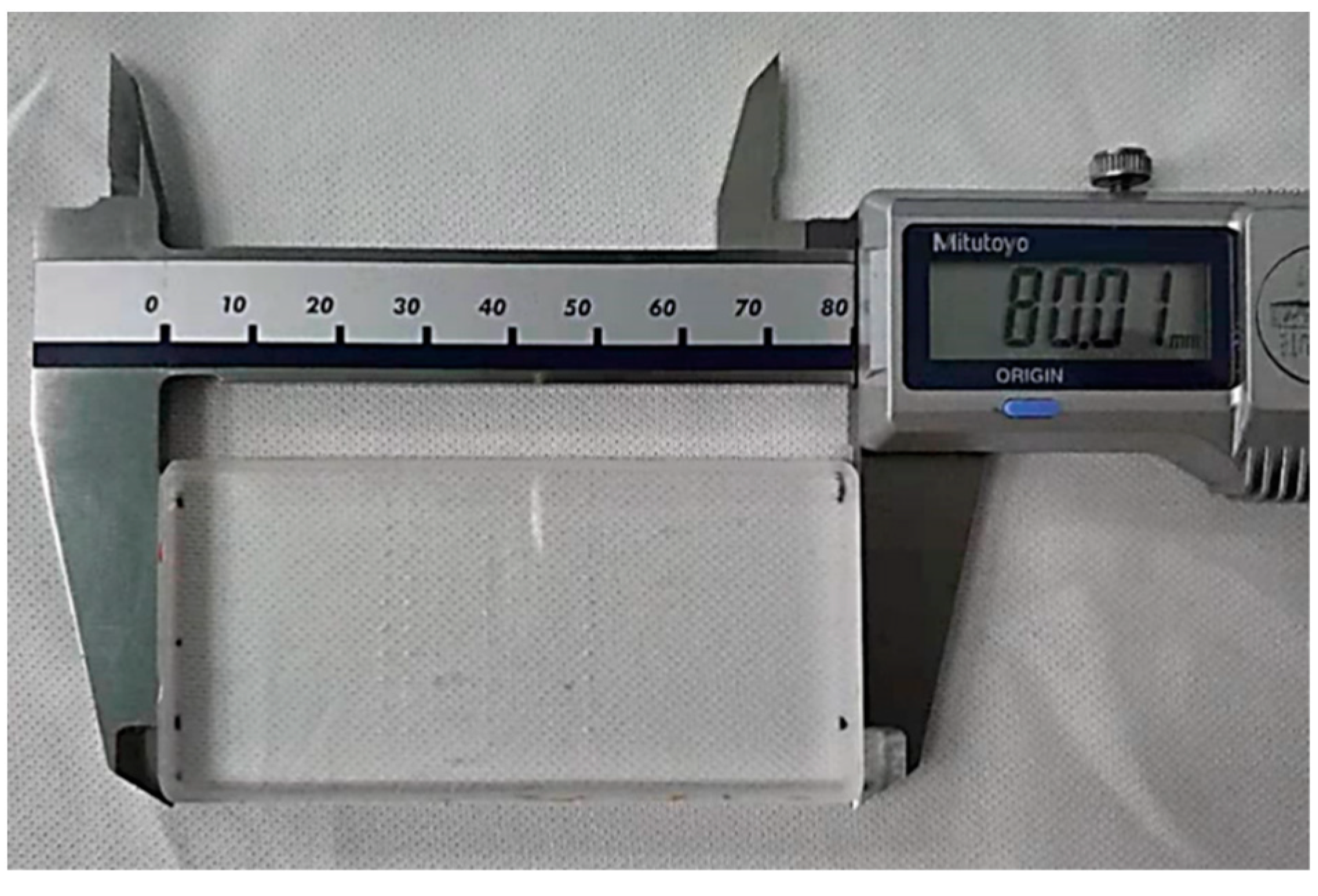
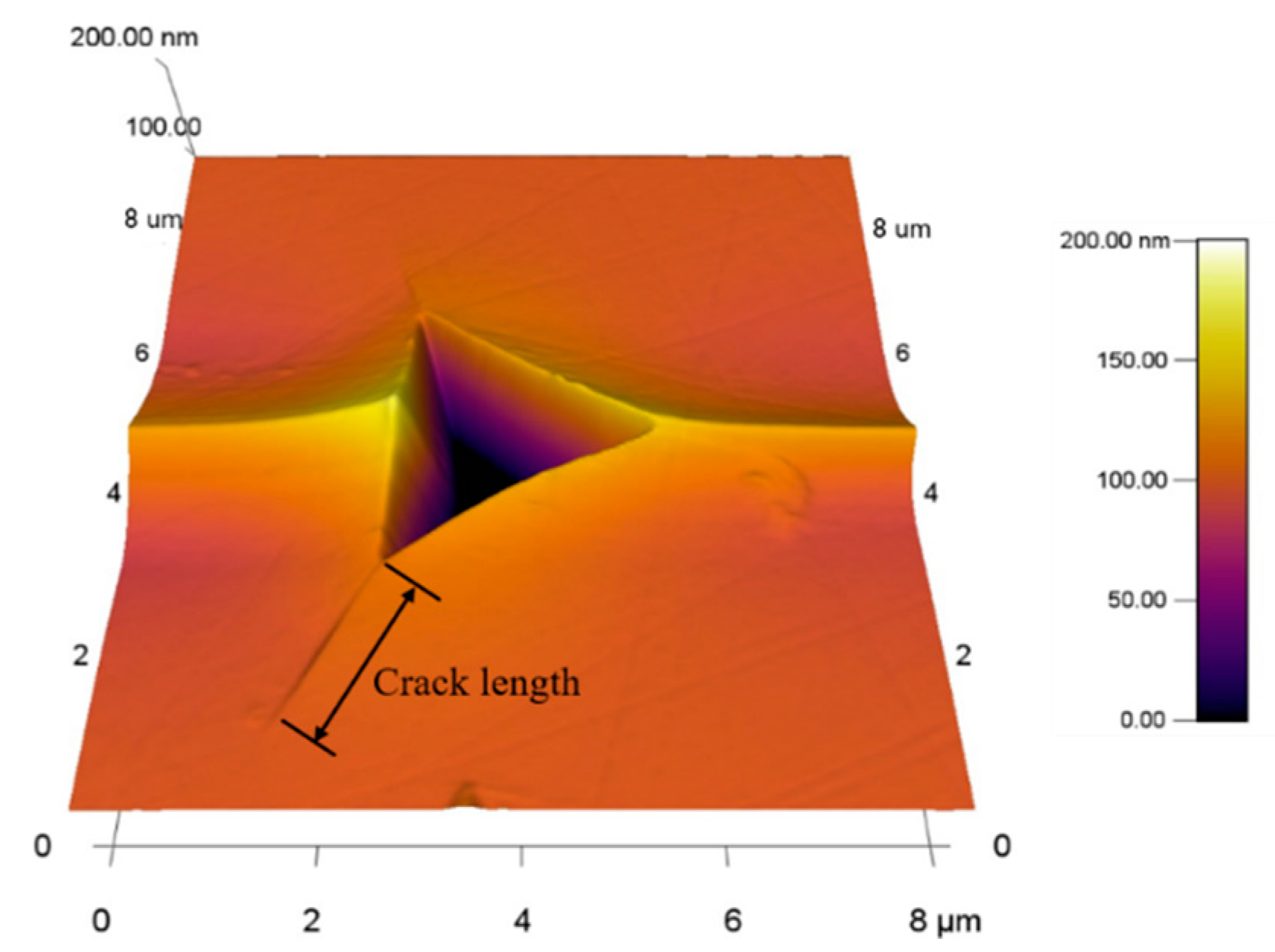
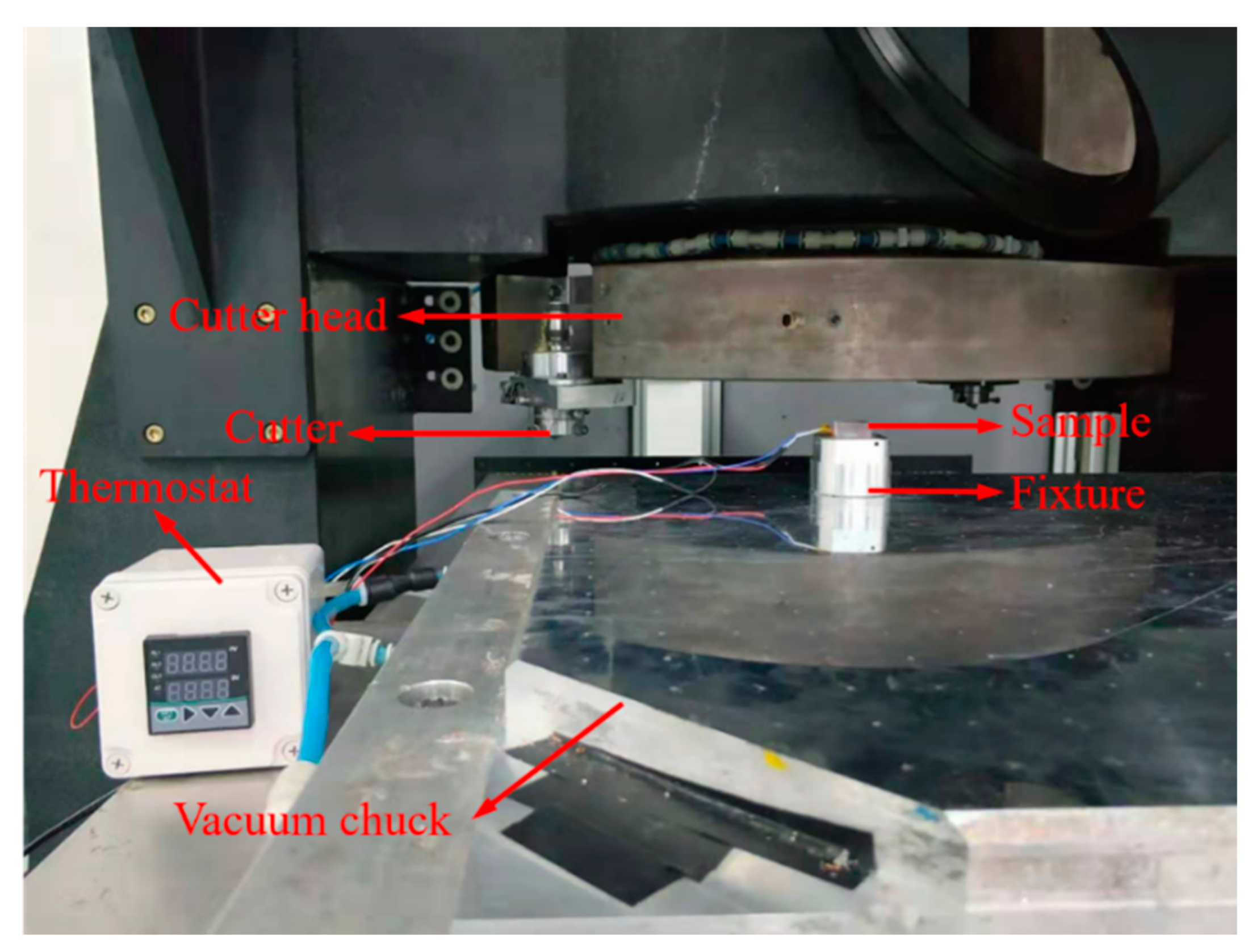


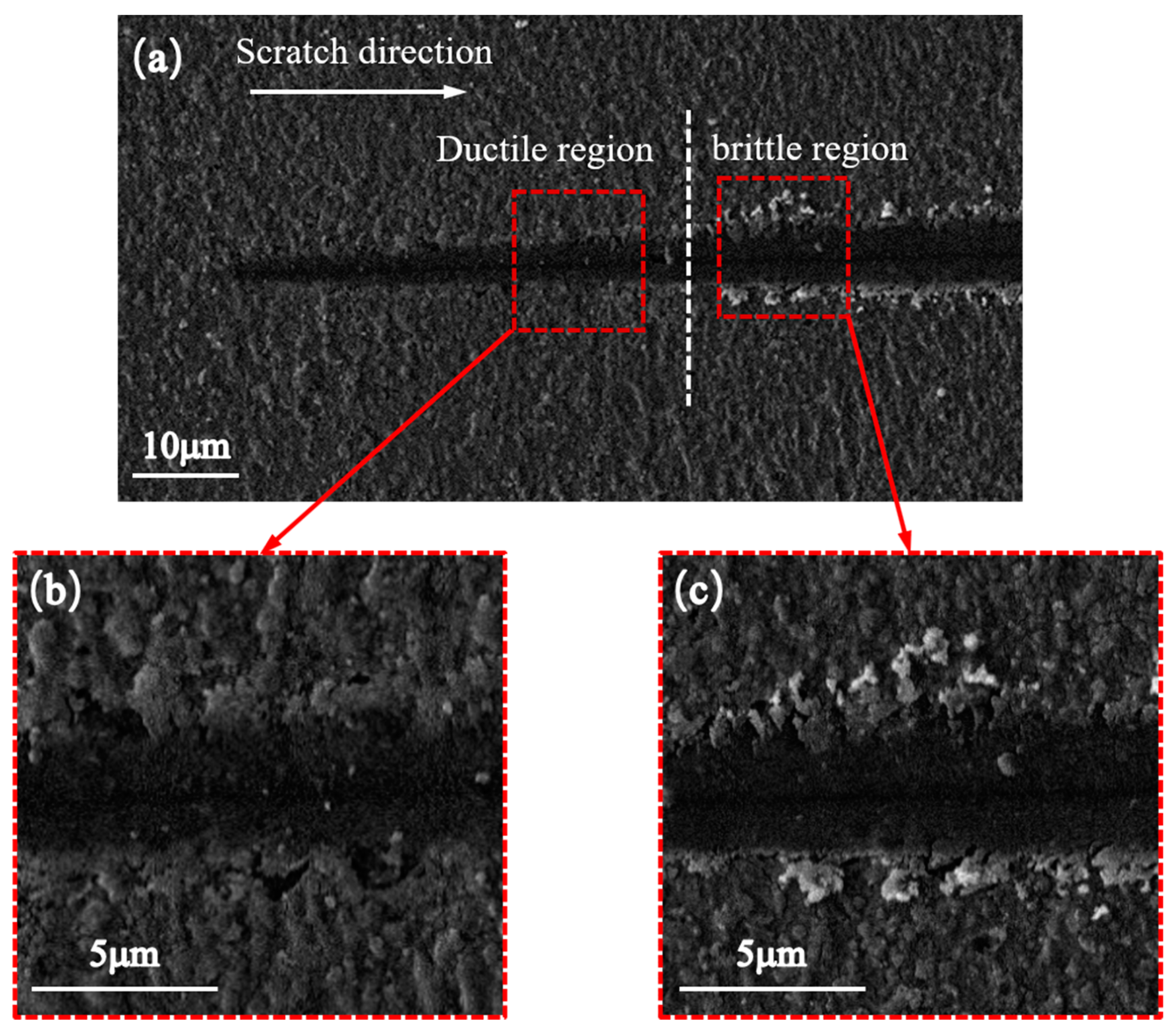
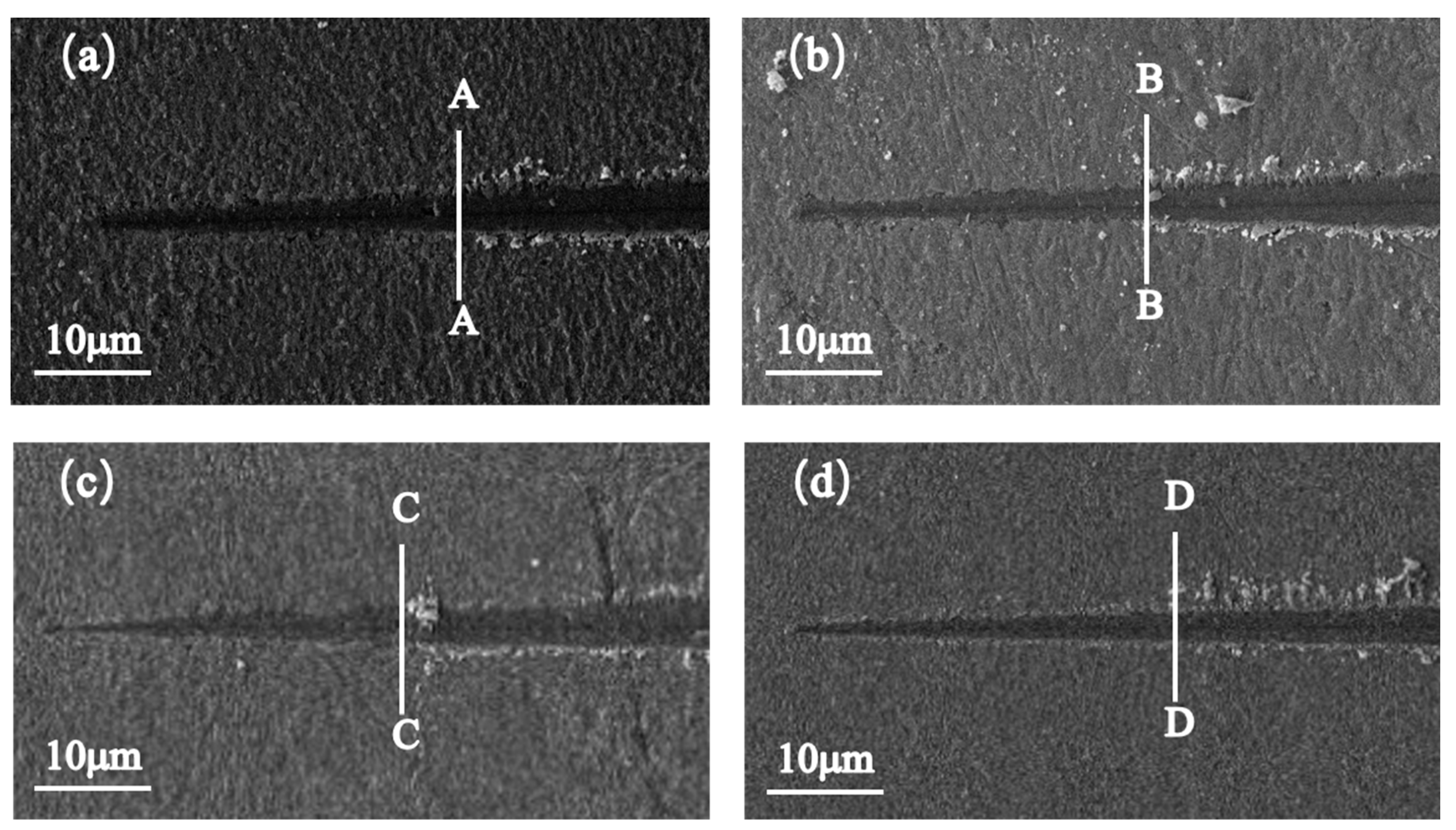

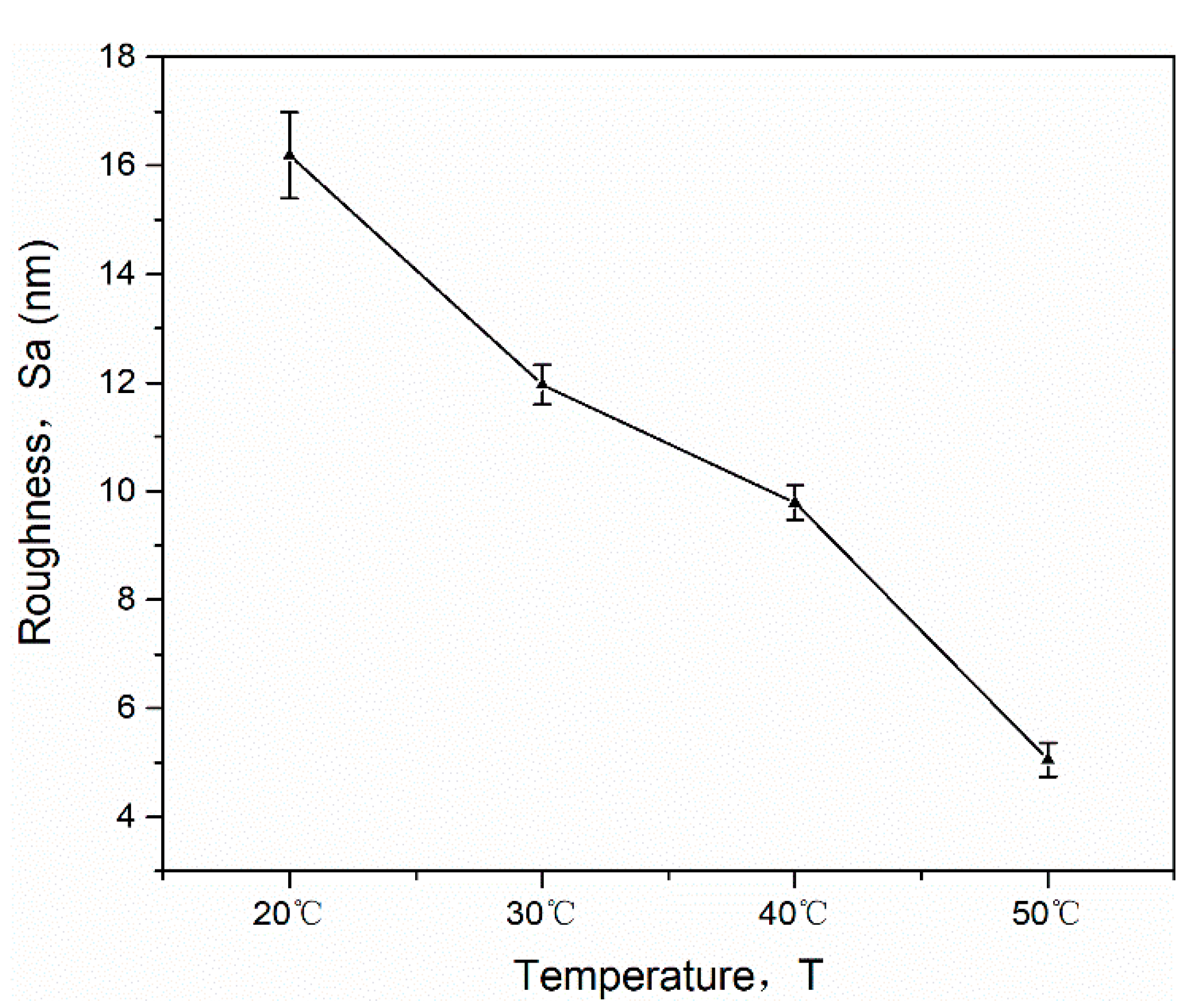
Disclaimer/Publisher’s Note: The statements, opinions and data contained in all publications are solely those of the individual author(s) and contributor(s) and not of MDPI and/or the editor(s). MDPI and/or the editor(s) disclaim responsibility for any injury to people or property resulting from any ideas, methods, instructions or products referred to in the content. |
© 2023 by the authors. Licensee MDPI, Basel, Switzerland. This article is an open access article distributed under the terms and conditions of the Creative Commons Attribution (CC BY) license (https://creativecommons.org/licenses/by/4.0/).
Share and Cite
Yang, H.; Fu, S.; Huang, M.; Cao, Z.; Wang, B.; Yang, G.; Jiang, Z. Ultra-Precision Cutting Mechanism of KDP Crystal in Microplastic Region via Heating Assistance. Appl. Sci. 2023, 13, 6865. https://doi.org/10.3390/app13126865
Yang H, Fu S, Huang M, Cao Z, Wang B, Yang G, Jiang Z. Ultra-Precision Cutting Mechanism of KDP Crystal in Microplastic Region via Heating Assistance. Applied Sciences. 2023; 13(12):6865. https://doi.org/10.3390/app13126865
Chicago/Turabian StyleYang, Hong, Siyuan Fu, Ming Huang, Zhonghao Cao, Baorui Wang, Guangwei Yang, and Zhong Jiang. 2023. "Ultra-Precision Cutting Mechanism of KDP Crystal in Microplastic Region via Heating Assistance" Applied Sciences 13, no. 12: 6865. https://doi.org/10.3390/app13126865




